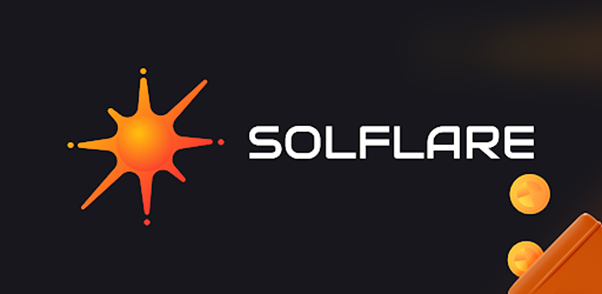Whoa! Ever stumbled upon a crypto airdrop that just *feels* different? The Linea airdrop is buzzing in the Web3 world, but it ain’t your typical freebie. At first glance, it looked like just another token toss. But then, somethin’ about its connection with MetaMask and WalletConnect made me pause.
Okay, so check this out—many folks dive into airdrops without fully grasping the wallet mechanics behind them. I mean, who hasn’t rushed to claim tokens only to realize later that their wallet setup wasn’t compatible? MetaMask, WalletConnect… they’re not just buzzwords here. They’re the gatekeepers of your Linea airdrop access.
Initially, I figured Linea was just another layer-2 chain airdropping tokens to get some hype. But then I dug deeper and realized the airdrop’s eligibility criteria rely heavily on your interactions via these wallets—especially WalletConnect’s seamless integrations. This isn’t just a random drop; it’s a strategic Web3 ecosystem play.
My instinct said, “Something felt off about just blindly connecting any wallet.” And that gut feeling paid off. You see, the way you link your MetaMask or WalletConnect can affect your claim’s validity. It’s not just about holding tokens; it’s about how you engage with the Linea network.
Here’s the thing. If you’re still trying to figure out how to even start, you’re not alone. The wallet setup can be tricky, especially if you’re juggling multiple devices or extensions. But once you get it right, the payoff could be pretty sweet.
Now, I’m not gonna sugarcoat it—wallet security is a big deal, and I’m biased towards MetaMask for its user-friendly UI and robust security features. WalletConnect, on the other hand, is a bit more flexible, letting you connect mobile wallets to dApps with ease. Together, they form a dynamic duo that’s crucial for claiming your linea airdrop.
Personally, I found that setting up WalletConnect was surprisingly intuitive, but there’s a catch: not all dApps support every wallet equally. That’s where Linea’s ecosystem shines—it’s built to smoothly handle these connections, which is why it’s gaining traction fast.
On one hand, you have the thrill of free tokens dropping into your wallet. Though actually, it’s more about what you do with them afterward. The real value might come from using these tokens within Linea’s Web3 environment, not just holding them. That’s a nuance many miss.
Something else that bugs me a bit is the hype around “just claim now!” without educating users about wallet risks. Seriously, don’t just click “connect” without knowing where your keys are stored or how WalletConnect bridges work. Your digital assets are only as safe as your setup.
So, if you’re wondering where to start, here’s a little heads-up: make sure your MetaMask wallet is up-to-date, and that your WalletConnect app is genuine (no shady clones out there). This part’s very very important, or you risk losing access or worse.

Why Linea Airdrop is More Than Just Free Tokens
Here’s what’s fascinating about Linea—the project is pushing the boundaries of what Web3 wallets can do beyond just “store and send.” It’s aiming at seamless interoperability using WalletConnect’s protocol layered on top of MetaMask’s popularity.
Imagine a world where your wallet isn’t just a vault but a gateway. That’s what Linea’s ecosystem is building. It’s not hype; it’s a glimpse of how Web3 might evolve. The airdrop is just the tip of the iceberg, a way to onboard users into this new experience.
Let me tell you, I tested claiming the linea airdrop on both MetaMask desktop and WalletConnect mobile. Initially, the mobile claim felt smoother, but I noticed some latency issues on desktop that could trip up less patient users.
Something interesting I noticed: the airdrop eligibility seems to reward active engagement, not just wallet holding patterns. So if you’ve been involved in certain Layer 2 activities or specific dApps, your chances improve. This approach kinda flips the usual “hold to earn” model on its head.
But, I’ll be honest, the documentation around this airdrop could use some work. It left me puzzled at times—especially when switching between wallets. I had to cross-reference community forums to piece together the full story.
Oh, and by the way, if you’re worried about privacy, WalletConnect’s bridge servers route your connections, which might not be ideal for everyone. MetaMask keeps things more local but isn’t as mobile-friendly. So there’s a trade-off depending on your priorities.
That said, the Linea team seems aware of these nuances and is actively improving. I caught a few updates in their GitHub repo that hint at better wallet integrations soon. So if you’re not ready now, don’t sweat it—there’s time to get everything set up right.
Honestly, the interplay between these wallets and the Linea network is a microcosm of bigger shifts in crypto usability. People want access that’s simple but secure; they want to control keys without losing convenience. Linea’s airdrop is a real-world test of that balance.
On a personal note, I’ve been exploring WalletConnect for a couple years now. It’s grown a lot, but I still find occasional quirks—especially when connecting to lesser-known dApps. Linea’s focus on making this seamless is promising, though.
So yeah, if you’re in the US or beyond and curious about how to snag these tokens, don’t just jump in. Take a moment to understand your wallet’s role. And if you want a solid starting point, check out the official linea airdrop page—it’s got the latest walkthroughs.
FAQs About Linea Airdrop and Wallets
Do I need both MetaMask and WalletConnect to claim the Linea airdrop?
Not necessarily. You can claim via either MetaMask or WalletConnect, but having both gives you flexibility, especially if you switch devices or want to engage with different dApps within Linea’s ecosystem.
Is it safe to connect my wallet to the Linea network?
Generally, yes. Just ensure you’re using official channels and updated wallet versions. Avoid suspicious links and never share your private keys. The Linea airdrop process is designed with standard security protocols.
What if I’m new to Web3 wallets? Can I still claim the airdrop?
Absolutely, but be patient. Start by setting up MetaMask or WalletConnect carefully, maybe test small transactions first. The official claim page has guides to help beginners navigate the process.



